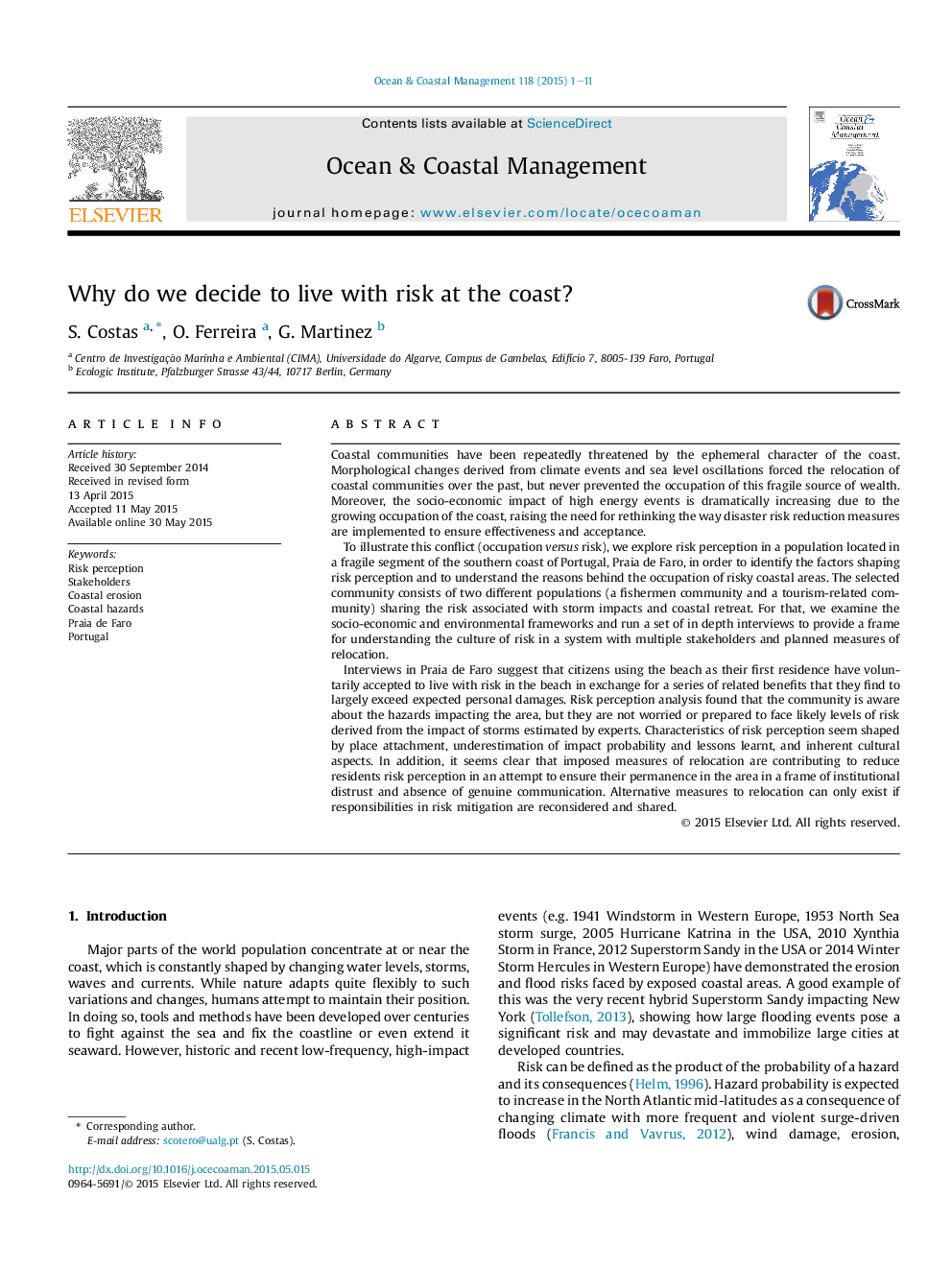| کد مقاله | کد نشریه | سال انتشار | مقاله انگلیسی | نسخه تمام متن |
|---|---|---|---|---|
| 1723403 | 1014788 | 2015 | 11 صفحه PDF | دانلود رایگان |
• We explore the social dimension of a risky coastal settlement in south Portugal.
• Risk perception is assessed to understand why people decide to live with risk.
• Local residents show a profound feeling of place attachment.
• Residents are aware of coastal hazards though they perceive lower levels of risk.
• Residents voluntarily accept the risk, yet they do not prepare and do not take responsibilities.
Coastal communities have been repeatedly threatened by the ephemeral character of the coast. Morphological changes derived from climate events and sea level oscillations forced the relocation of coastal communities over the past, but never prevented the occupation of this fragile source of wealth. Moreover, the socio-economic impact of high energy events is dramatically increasing due to the growing occupation of the coast, raising the need for rethinking the way disaster risk reduction measures are implemented to ensure effectiveness and acceptance.To illustrate this conflict (occupation versus risk), we explore risk perception in a population located in a fragile segment of the southern coast of Portugal, Praia de Faro, in order to identify the factors shaping risk perception and to understand the reasons behind the occupation of risky coastal areas. The selected community consists of two different populations (a fishermen community and a tourism-related community) sharing the risk associated with storm impacts and coastal retreat. For that, we examine the socio-economic and environmental frameworks and run a set of in depth interviews to provide a frame for understanding the culture of risk in a system with multiple stakeholders and planned measures of relocation.Interviews in Praia de Faro suggest that citizens using the beach as their first residence have voluntarily accepted to live with risk in the beach in exchange for a series of related benefits that they find to largely exceed expected personal damages. Risk perception analysis found that the community is aware about the hazards impacting the area, but they are not worried or prepared to face likely levels of risk derived from the impact of storms estimated by experts. Characteristics of risk perception seem shaped by place attachment, underestimation of impact probability and lessons learnt, and inherent cultural aspects. In addition, it seems clear that imposed measures of relocation are contributing to reduce residents risk perception in an attempt to ensure their permanence in the area in a frame of institutional distrust and absence of genuine communication. Alternative measures to relocation can only exist if responsibilities in risk mitigation are reconsidered and shared.
Journal: Ocean & Coastal Management - Volume 118, Part A, December 2015, Pages 1–11
